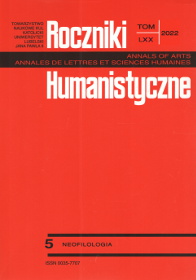Between Illusion and Reality: The Body in “Le Jeûne” and “La Mort d’un paysan” by Émile Zola
Abstract
This article studies the two tales conributed by Émile Zola to Le Nouveau Décaméron, the collective enterprise of Catulle Mendès. These contributions, “Le Jeûne” and “La Mort d’un paysan”, form two parts of the same questioning of the relationship between the material and the spiritual, and between the physical reality of the body and the mind. For the selfish and frivolous Baroness in “Le Jeûne,” the eloquence of the vicar combined with the warmth in the church give her a sensual pleasure that goes against the warnings of the priest. In contrast, “La Mort d’un paysan” presents a positive perspective on rural life regulated by natural rhythms and family solidarity, where death is accepted as a part of life, but illusion is banished. These two texts allow Zola to attack, from opposite directions, a false and unproductive idealism.
References
Ménard, Sophie. Émile Zola et les aveux du corps. Classiques Garnier, 2014.
Le Nouveau Décaméron. Paris, E. Dentu Éditeur, 1884-1887, 10 vol.
Seillan, Jean-Marie. Le Roman idéaliste dans le second XIXe siècle. Classiques Garnier, 2012.
Serres, Michel. Feux et signaux de brume, Zola. Grasset, 1975.
Zola, Émile. « Comment on meurt ». Œuvres complètes, vol. 9. Cercle du Livre Précieux, 1966-1970, pp. 559-584.
Zola, Émile. « Le Jeûne ». Le Nouveau Décaméron. Deuxième journée, « Dans l’atelier ». Paris, E. Dentu Éditeur, 1884, pp. 81-91.
Zola, Émile. « La Mort d’un paysan ». Le Nouveau Décaméron. Cinquième journée, « La Rue et la Route ». Paris, E. Dentu Éditeur, 1885, pp. 11-22.
Zola, Émile. « La Terre ». Œuvres complètes, vol. 5. Le Cercle du Livre Précieux, 1966-1970, pp. 749-1157.
Copyright (c) 2022 Roczniki Humanistyczne

This work is licensed under a Creative Commons Attribution-NonCommercial-NoDerivatives 4.0 International License.





